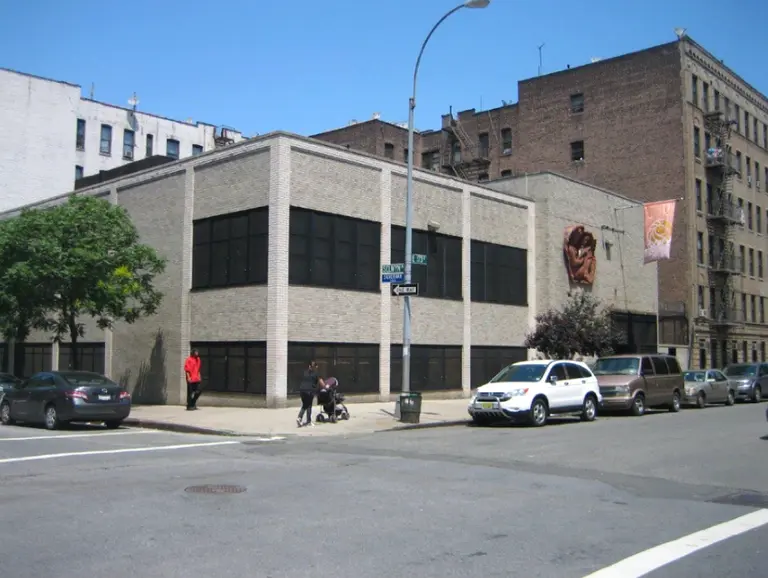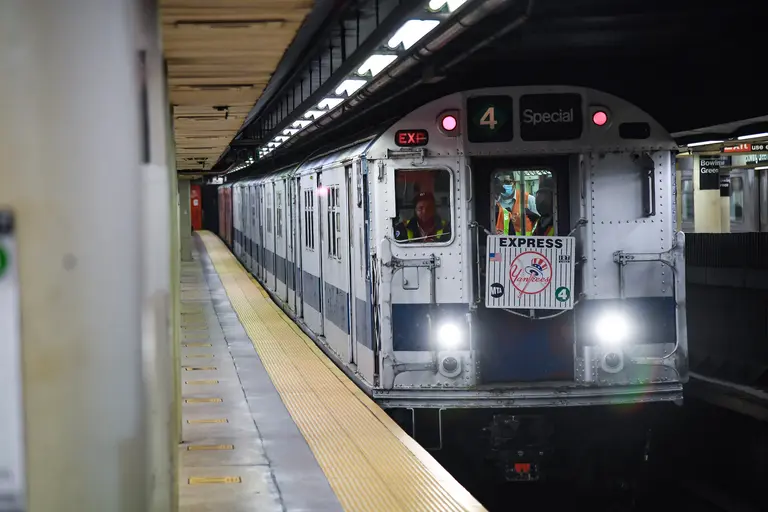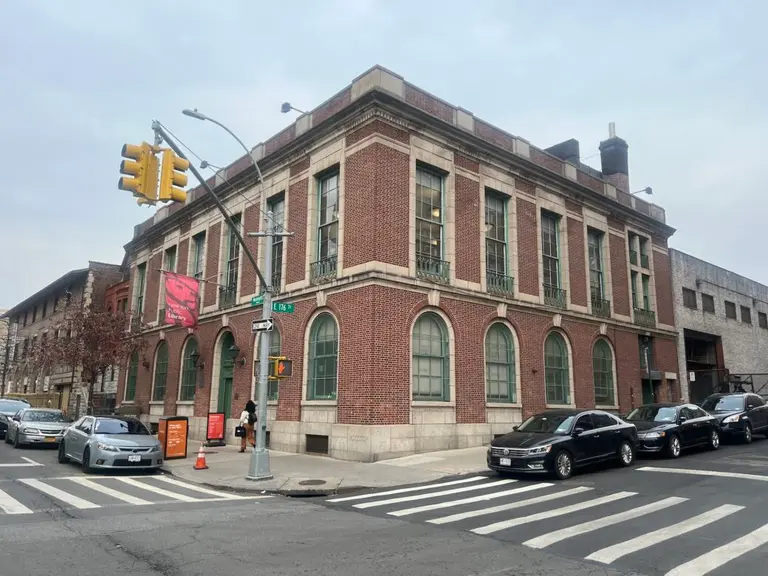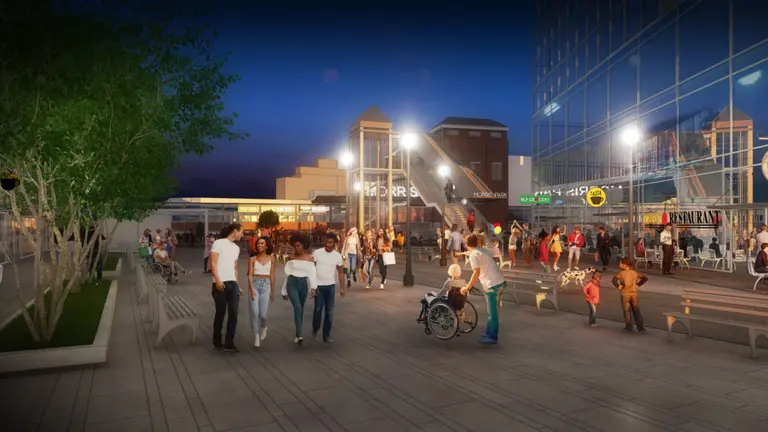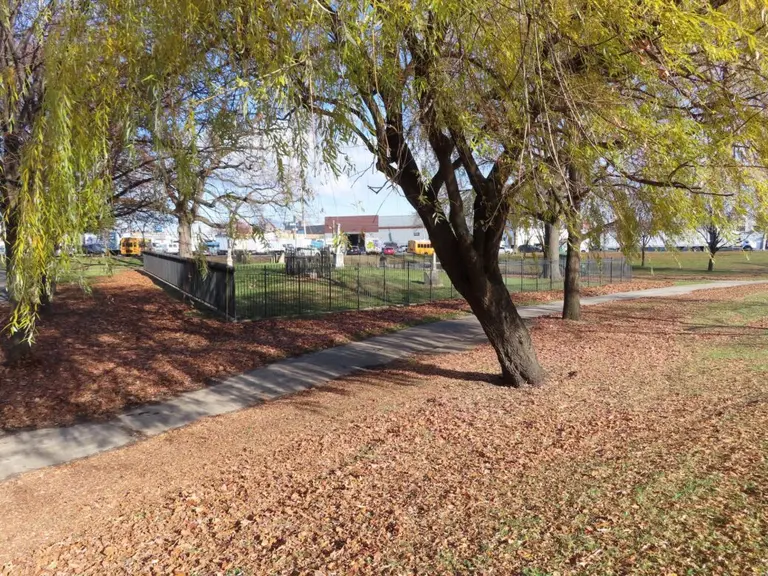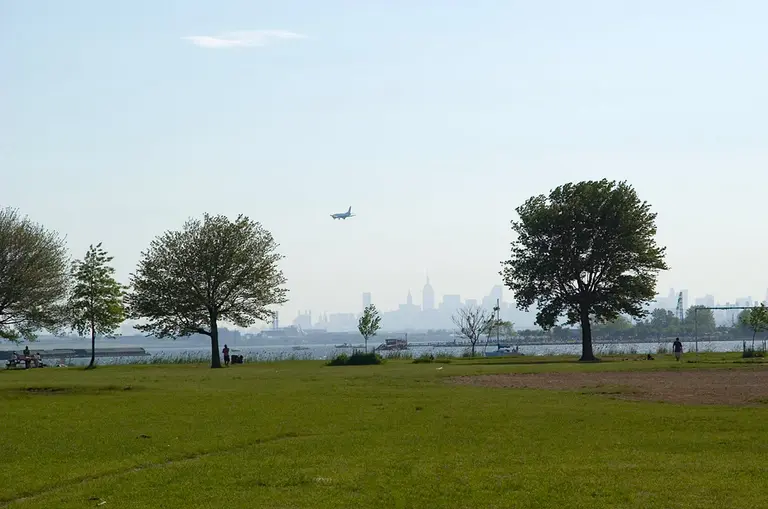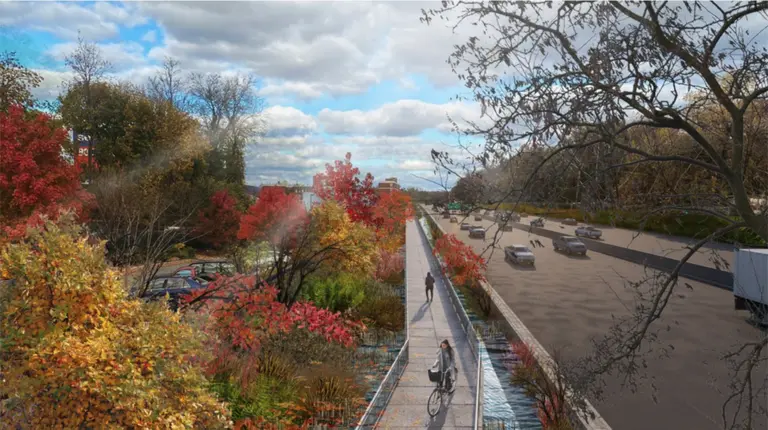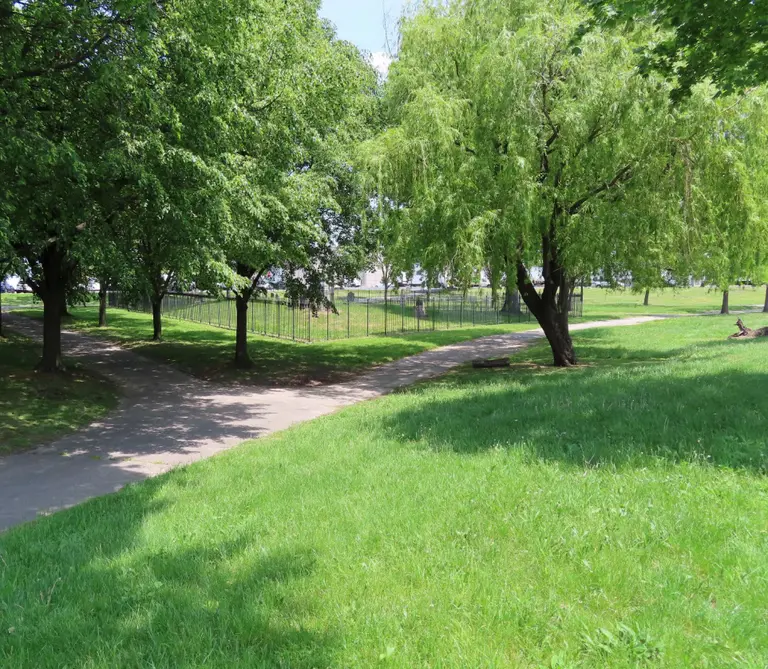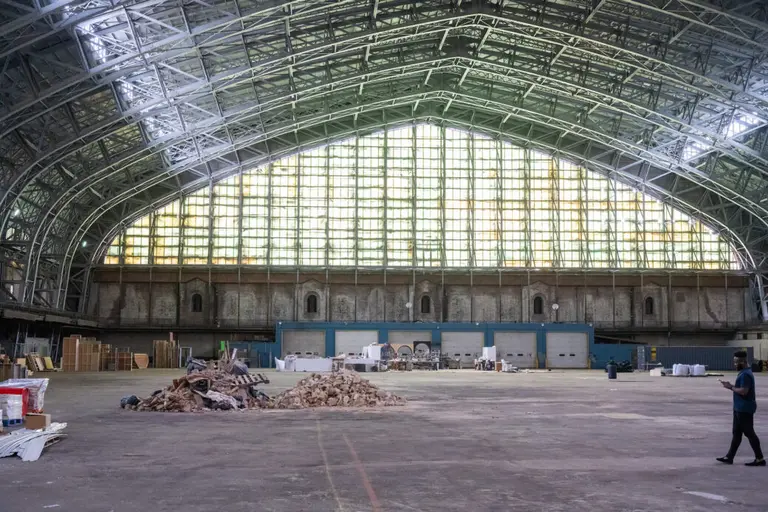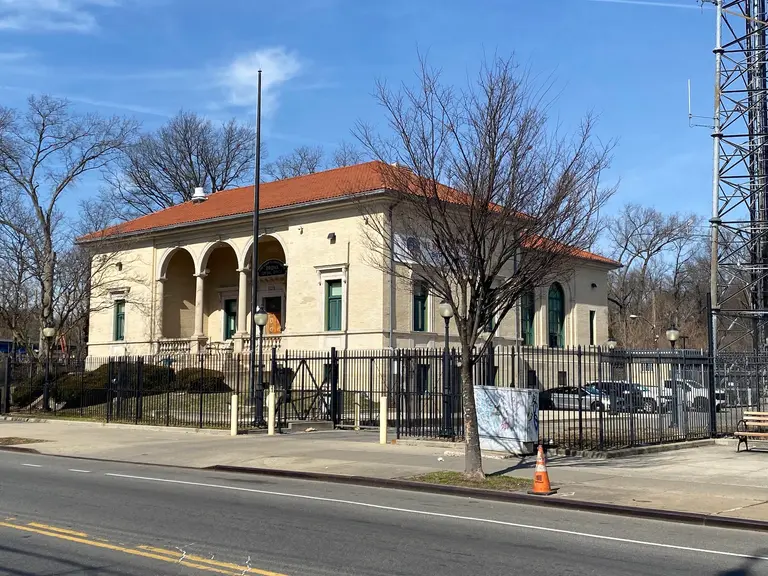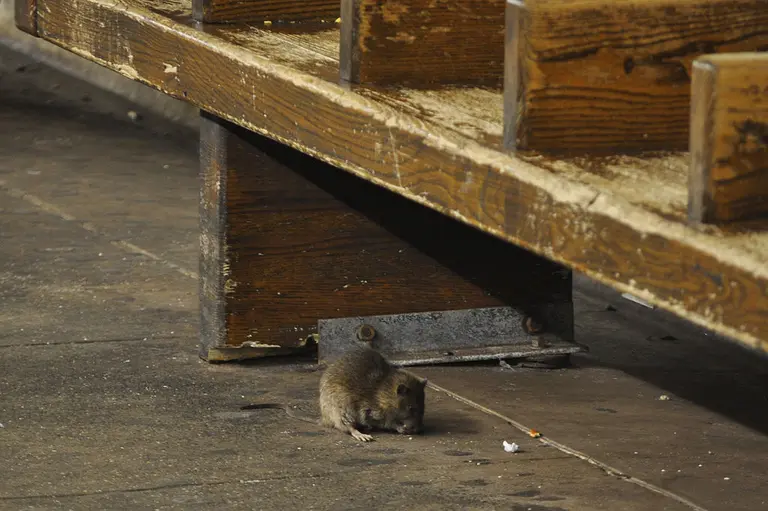New bus-only lanes in the South Bronx will speed up city’s slowest routes
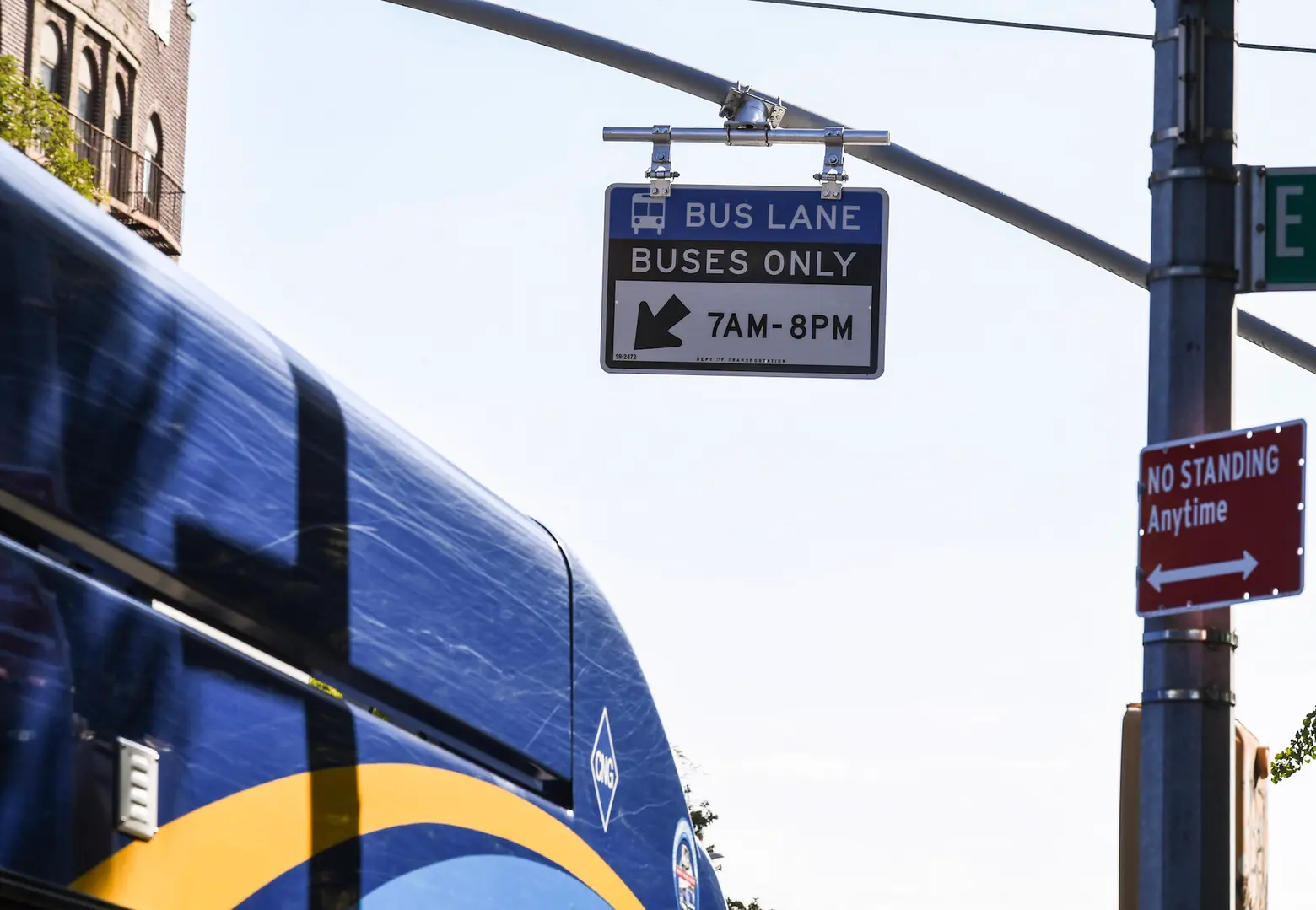
Photo credit: Marc A. Hermann / MTA New York City Transit on Flickr
Nearly three miles of dedicated bus lanes equipped with transit signal priority technology and enforcement cameras opened in the South Bronx last week, part of the city’s plan to speed up the system’s notoriously slow travel times. The new lanes run along East 149th Street between Southern Boulevard and River Avenue and are used by four heavily-used bus routes, the Bx2, Bx4, Bx17, and the Bx19. The bus improvement project is the fourth to be completed since Mayor Bill de Blasio announced his Better Buses Restart plan in June amid the city’s coronavirus pandemic recovery.
“The simple fact of the matter is that even during this pandemic, the bus system remains a critical lifeline for more than a million New Yorkers each day,” Sarah Feinberg, interim president of NYC Transit, said.
“Creating more dedicated bus lanes is a simple yet transformative approach toward alleviating traffic congestion. We know that a car-led recovery will only lead to more gridlock. Bus priority is the most vital ingredient in ensuring that our bus customers get around quicker and more reliably and I’m eager to move forward with more projects like the one we’re announcing today.”
New York City’s bus system remains one of the slowest in the country, which has led to a drop in ridership over the last decade. In 2018, the Straphangers Campaign and TransitCenter awarded the B19, which runs between the New York Botanical Garden and Riverbank State Park, a “Pokey Award,” for moving on average just 4.6 miles per hour.
All four routes, which served 55,000 customers on a typical weekday before the pandemic, saw some of the slowest bus speeds in the system. According to the city, these buses moved “at walking speed or slower most of the day,” or roughly 4 miles per hour.
The improvements include red-painted, designated bus lanes, pedestrian islands, turn bays, and safer loading zones, which all aim to reduce congestion and double parking, which will ultimately speed up the buses.
Plus, transit signal priority (TSP) has been installed along the corridor. TSP shortens the time buses spend at red lights, holding the green lights longer to keep the buses moving. The city’s Department of Transportation and the MTA has installed this technology at 1,350 intersections throughout the city.
New bus lane enforcement cameras have also been installed, with the MTA issuing violation warning for the next two months. Bus-lane camera violations begin at $50 and can be as high as $250 for the fifth violation in one year.
“We know that the key to effective bus service is well enforced bus priority,” Craig Cipriano, MTA Bus Company President and NYC Transit SVP for Buses, said in a press release. “Prior to the pandemic, buses along this corridor were among the slowest in the system, with average speeds consistently registering at less than five miles per hour due to heavy congestion as well as rampant double parking.”
In June, de Blasio made the popular busway on 14th Street permanent and announced five new busways and 16.5 miles of bus lanes. In addition to 149th Street, newly designated bus lanes include East 14th Street between 1st Avenue and Avenue C, Merrick Boulevard between Hillside Avenue and Springfield Boulevard in Queens, and Hylan Boulevard between Lincoln Avenue and Nelson Avenue on Staten Island.
De Blasio’s plan to open 20 miles of bus lanes and busways falls short of the 60 miles requested by the MTA in the summer. It also doesn’t meet the request by four borough presidents, who asked the mayor to fast-track adding 40 miles of new bus lanes across the city.
RELATED:
